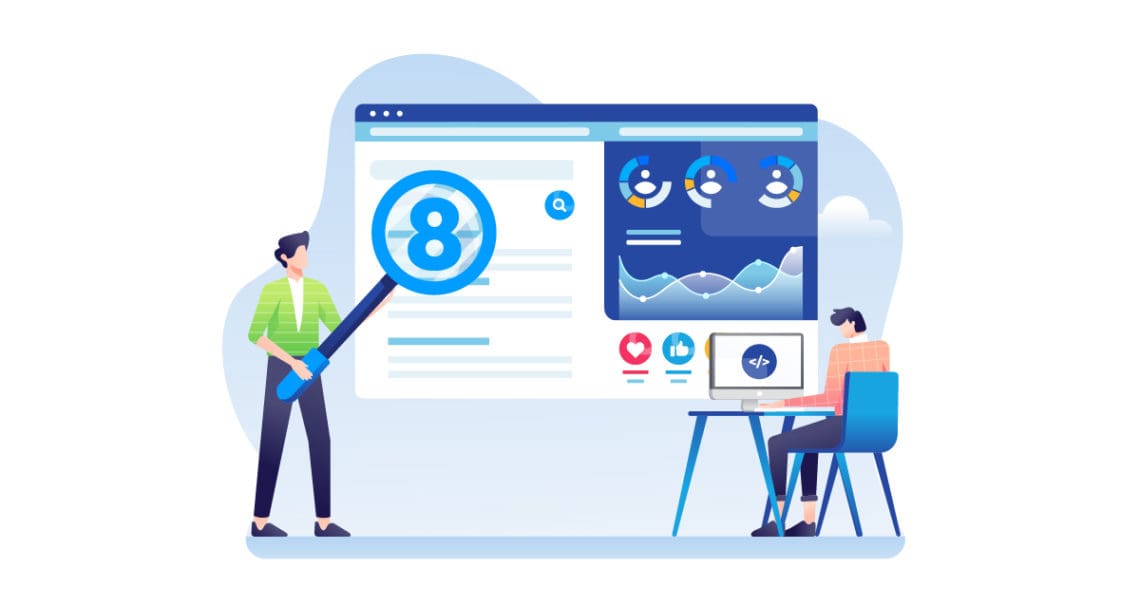Whether you have an online store or offering IT services, you must know how to measure revenue and conversions from SEO efforts. In most companies where the business’s success is mainly tied to income and conversions, people ignore the importance of monitoring SEO success.
Measuring SEO success can vary depending on your business type, goals, and audiences. However, some generic tips that any business owner can use to monitor the success of SEO. In this blog, we will reveal some valuable tips to keep an eye on your SEO efforts.
Let’s Have A Look At All The Tips.
- Look For Organic Traffic.
For newbies to this term, organic traffic is the traffic coming from searches, and that’s the traffic you can increase using sound SEO strategies. As you work on improving search engine rankings for a particular keyword of your site, the organic traffic on your website from the keywords will increase.
Check out the keywords your website is currently ranked for using your website’s Google Search Console tool. Apart from this, marketing efforts can extend your brand’s awareness and improve organic traffic through branded search terms.
- Website Bounce Rate.
The bounce rate of your website is the total percentage of people who visited your website and then left (bounced) without making a purchase or waiting for some time. If this is the case for a particular keyword search, your page may not come in search results again for that specific keyword search.
If your website’s bounce rate is high, the carrier may not be viewed as relevant to a person who finds it using a keyword search.
- Determining ROI.
Make sure to track the monetary value of conversions to determine the ROI of your SEO efforts. Suppose you are only measuring a new customer’s initial purchase and not considering the future purchases. In that case, the customer can inaccurately calculate the actual return you are receiving on your SEO investment.
- Keyword Rankings.
Knowing how much effort you need to put to rank is important. And for that, make sure you analyse the ranking of your domain on main targeted keywords before starting to work on your SEO strategy.
Also, during the process, you would need to track search engine rankings of your domain on targeted keywords every month to analyze how your SEO efforts are paying off.
This is because the keyword rankings fluctuate throughout a day, week, and month. And tracking could help to understand what is bringing improvements over time, and what more and less needs to be done.
- Pages Per Visit.
Pages per visit are the metric you need to keep track of and your visitors’ time on site. Pages per visit can be an indicator of how people find information and navigate your site.
You need to keep relevant content on the top of the website to make sure people visit your website and take action like making a purchase or reading a blog. Yes, people scroll, but some people don’t, and it takes just a few seconds to turn someone OFF. Make sure you have unique content above the fold, not just an image.
- Session Duration.
Session duration is how much time, on average, someone spends on your site. To increase session duration or make people spend more time on your site, make sure you have placed unique content when they click through to your site.
This is an excellent metric for determining whether your website’s Meta titles and Meta descriptions are well written and website pages are optimized for the correct keywords and phrases.
- Traffic Quality.
When you are getting much irrelevant traffic on your site, it will not help you in any way. Measure the quality of traffic, and you need to do a more careful analysis. Metrics you can use to know the quality of traffic:
- Pages per visit
- Bounce rate
- Duration of the average visit
If you find that the average number of pages viewed per visit, the average time visitors is low, and the site’s bounce rate is high, there is either an issue with your website or the quality of traffic your keywords deliver.
- Alexa Ranking.
Whether your site ranks in the thousands or the hundreds of thousands, the ranking is still a relevant factor to determine the site’s ranking.
Alexa Rank shows how a website is ranking taking into account all other sites. Alexa ranking is a great KPI for benchmarking and competitive analysis.
- Goals & Conversions.
Set your in Google Analytics to track form fills, downloads, and other CTAs of your site. Start tracking the metrics on where the traffic is coming and the frequency of its conversion. You can measure the number of visits to a page and then optimize the page based on the data.
- Click-through Rate (CTR).
Your CTR(click-through rate) from search results to a particular page can give you insights on how you’ve optimized your website page title and meta description. Use Google Search Console to find this data.
The average CTR on paid search ads is around 2%. Anything over 2% is an above-average CTR, and a high CTR indicates that you are targeting the right audience through your ads.
Conclusion.
Google’s algorithm is constantly changing, and the old-school SEO strategy might not give you the result you expect from your SEO efforts. You can track SEO success using the above tips and get the maximum value from your SEO strategy.
